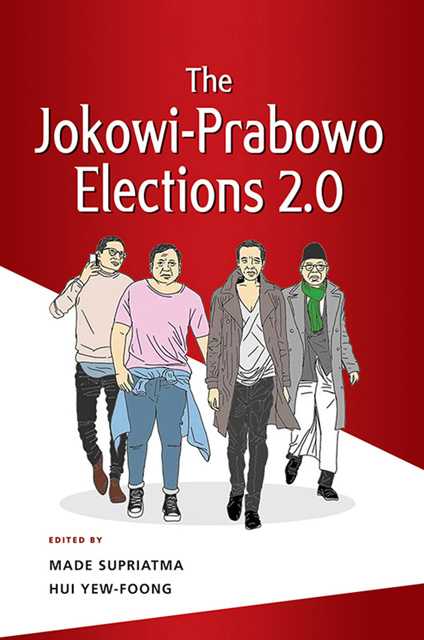1 - The 2019 Indonesian Elections: A Political Déjà vu?
Published online by Cambridge University Press: 30 June 2023
Summary
On 17 April 2019, Indonesians marched to the polls to elect their president and vice president directly for the fourth time since direct election of the highest offices of Indonesia was introduced in 2004. And for the first time, concurrently, Indonesians had to elect 575 members of the national parliament (Dewan Perwakilan Rakyat, DPR), 136 members of the Regional Representative Council (Dewan Perwakilan Daerah, DPD), and 19,722 members of the regional legislatures (2,207 members of the provincial legislature and 17,515 members of the district/municipal legislatures) (BPS 2019, p. 26). While this combination of elections was a major historical undertaking, attention was more focused on the presidential election, not just because the presidential office holds significant executive powers, but also because the key contenders were the same as those for the last presidential election.
The incumbent, President Joko Widodo (popularly known as Jokowi), had to face off against the same rival, former army general and founder of the Great Indonesia Movement Party (Partai Gerakan Indonesia Raya or Gerindra), Prabowo Subianto. Although the vice-presidential candidates were different—Jokowi picked Muslim cleric Ma’ruf Amin while Prabowo settled on the successful self-made businessman Sandiaga Uno—the political support bases did not differ significantly from the last contest five years before. In fact, we could make the case, based on the electoral outcome, that the polarization between the two camps of supporters—loosely framed as Islamic moderates-pluralists and Islamic conservatives—had intensified. No doubt, this is in large part due to the curious fact that the key players and dynamics of Indonesia's political major league had remained largely unchanged, such that the same pair of frontrunners had emerged again. It is in this vein that we may consider the 2019 elections as the Jokowi–Prabowo elections 2.0, and it is the objective of this volume to unravel the dynamics of the elections.
The aforementioned polarization, or the emergence of an ideological divide among voters, was already apparent during the first Jokowi– Prabowo presidential race in 2014. Jokowi had more sway among moderate Muslims and ethnic and religious minorities, who preferred a more pluralist Indonesia. In contrast, Prabowo garnered more votes from conservative Muslims, who desired a more extensive role for Islam in Indonesia's social and political life.
- Type
- Chapter
- Information
- The Jokowi-Prabowo Elections 2.0 , pp. 1 - 18Publisher: ISEAS–Yusof Ishak InstitutePrint publication year: 2022



